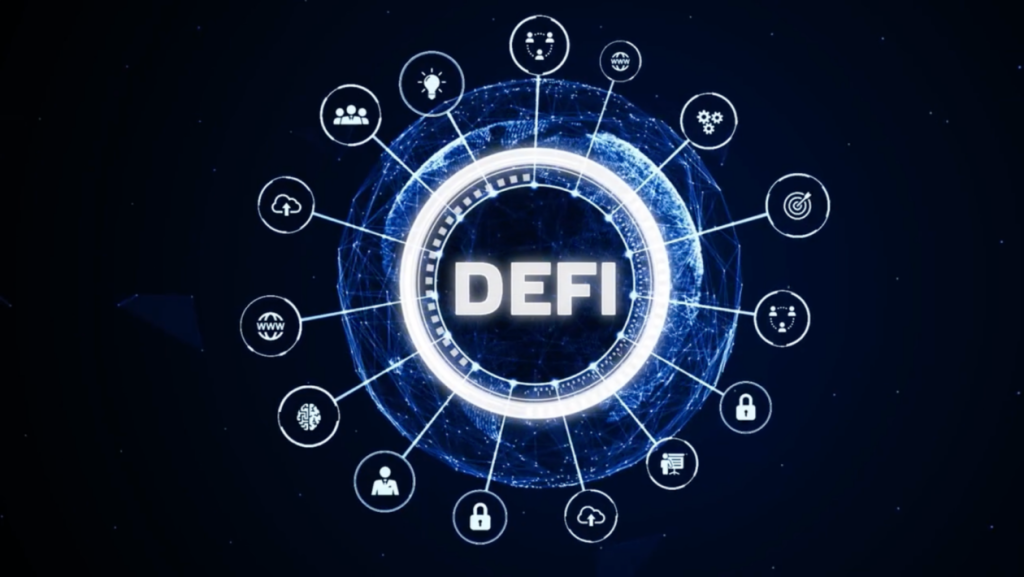Introduction
The global financial system is undergoing a profound transformation, driven by the rise of decentralized finance (DeFi) and the broader movement toward Web3—a new, user-owned version of the internet built on blockchain technology. DeFi and Web3 aim to dismantle centralized control over finance, data, and infrastructure, empowering users with direct ownership and permissionless access.
These technologies challenge the foundations of traditional finance (TradFi) by introducing open, programmable, and transparent alternatives to banks, brokers, exchanges, and payment systems. In this article, we explore how the evolution of DeFi and Web3 is reshaping the global financial landscape, the trends driving this shift, and the challenges that lie ahead.
What Is DeFi?
Decentralized Finance (DeFi) refers to financial applications built on public blockchains—especially Ethereum—that operate without intermediaries like banks or brokers. Instead of relying on institutions, DeFi protocols use smart contracts to automate financial transactions in a transparent, programmable, and trustless manner.
Common DeFi use cases include:
- Lending and borrowing platforms (e.g., Aave, Compound)
- Decentralized exchanges (DEXs) like Uniswap
- Stablecoins (e.g., DAI, USDC)
- Synthetic assets and derivatives
- Yield farming and staking
Users interact directly with smart contracts, maintaining full control over their funds and data.
What Is Web3?
Web3 represents a vision of the internet where users own their data, digital assets, and identities. It integrates decentralized technologies like blockchain, DeFi, NFTs, and DAOs to build a more open and user-centric internet.
In the context of finance, Web3 enables:
- Wallet-based authentication (instead of usernames/passwords)
- Peer-to-peer payments and value transfer
- Tokenized ownership and governance
- Integration of finance into everyday digital interactions (e.g., in games, marketplaces, and social platforms)
Together, DeFi and Web3 lay the foundation for a borderless, programmable, and inclusive financial system.
Key Trends Driving the Transformation
1. Disintermediation of Financial Services
DeFi eliminates the need for traditional middlemen like banks, clearinghouses, or payment processors. Instead, smart contracts execute rules automatically, reducing cost, latency, and counterparty risk.
Impact:
Retail investors now have direct access to lending markets, exchanges, and investment tools—often with higher returns and fewer barriers.
2. Tokenization of Assets
Web3 enables real-world assets (RWAs) to be represented as tokens on a blockchain, including:
- Stocks
- Bonds
- Real estate
- Commodities
- Carbon credits
These tokenized assets can be traded 24/7, fractionally owned, and instantly settled, opening up liquidity and accessibility.
3. Programmable Money and Smart Contracts
Unlike traditional money, crypto-assets are programmable. Developers can build logic directly into financial products, automating tasks like:
- Interest payments
- Collateral liquidation
- Portfolio rebalancing
This reduces overhead, increases transparency, and allows for composable finance, where services can be stacked together like building blocks.
4. Open and Global Access
All you need to access DeFi is a crypto wallet and an internet connection—no credit checks, no IDs, no borders. This opens financial services to the unbanked and underbanked globally, especially in regions with weak financial infrastructure.
5. DAO Governance Models
Decentralized Autonomous Organizations (DAOs) are replacing traditional management structures in DeFi protocols. Token holders vote on upgrades, fee models, and treasury spending—pushing decision-making to the community level.
This is challenging the role of centralized boards and financial institutions in product governance and capital allocation.
How DeFi and Web3 Are Reshaping the Financial System
1. Lending and Credit Markets
In DeFi, borrowers can obtain loans instantly by overcollateralizing with crypto assets. Lenders earn yield in real time.
Contrast with TradFi:
- No credit history needed
- No intermediaries
- Interest rates determined algorithmically
Projects like Aave, Compound, and Maple Finance are already serving retail and institutional users alike.
2. Decentralized Exchanges (DEXs)
DEXs enable users to trade tokens directly from their wallets without giving up custody. Liquidity is provided by users, not institutions, and prices are determined by smart contract algorithms.
Key platforms:
- Uniswap
- Curve
- Balancer
They reduce reliance on centralized exchanges and enable round-the-clock, censorship-resistant trading.
3. Stablecoins and On-Chain Money
Stablecoins like DAI, USDC, and USDT serve as digital dollars on-chain. They enable:
- Fast, cheap, borderless payments
- On-chain savings accounts
- Fiat-crypto bridging
DeFi protocols use stablecoins as the backbone of lending, trading, and liquidity provisioning.
4. Insurance and Risk Management
On-chain insurance protocols like Nexus Mutual or InsurAce allow users to pool capital and protect against smart contract failures, hacks, or market events—replacing traditional insurance providers with decentralized alternatives.
5. Embedded Finance in Web3 Apps
Web3 apps are embedding financial features directly into non-financial platforms:
- Games with play-to-earn economies
- Social media with tokenized tipping and creator rewards
- Marketplaces with NFT-based ownership and resale mechanisms
This blurs the line between financial services and digital experiences.

Implications for Traditional Finance
1. Competitive Pressure
DeFi offers faster settlement, global access, and lower fees. Traditional institutions must now compete on innovation and user control—not just brand and regulation.
2. Partnerships and Integration
Forward-thinking banks and fintechs are exploring integrations with DeFi protocols, offering:
- On-ramps to crypto services
- Tokenized assets and DeFi yields in traditional portfolios
- Custody and compliance layers
3. Regulatory Disruption
Regulators are facing new challenges around:
- KYC/AML compliance in decentralized systems
- Classification of tokens and protocols
- Tax treatment of DeFi gains
The lack of clear frameworks creates both opportunity and risk for incumbents and innovators.
4. Institutional Adoption of Web3 Infrastructure
More financial institutions are experimenting with blockchain for:
- Cross-border payments
- Settlement and clearing
- Securitization and asset management
Web3 tools are being adopted behind the scenes—even by TradFi leaders.
Challenges and Limitations
Despite its promise, DeFi and Web3 face real hurdles:
- Security risks: Protocols are vulnerable to smart contract bugs and exploits.
- Scalability: Network congestion and high gas fees remain a challenge on some blockchains.
- User experience: Managing private keys and navigating protocols can be complex.
- Regulatory uncertainty: Global inconsistencies in policy create confusion and inhibit growth.
Still, these challenges are being actively addressed by ongoing innovation in scalability (Layer 2s, rollups), user onboarding (smart wallets), and legal infrastructure (compliant DeFi).
Conclusion
DeFi and Web3 are more than buzzwords—they represent a fundamental rethinking of how value is created, transferred, and governed. By removing centralized intermediaries, opening access, and enabling programmable assets, these technologies are building a parallel financial system that is global, open, and user-centric.
While traditional finance will not disappear, it will increasingly evolve or integrate with decentralized infrastructure. The institutions that adapt—by embracing tokenization, composability, and community governance—are most likely to thrive in this new financial paradigm.The future of finance is being rewritten in real time—and DeFi and Web3 are holding the pen.
















































